Abstract
Combinatorial chemistry is gaining wide appeal as a technique for generating molecular diversity. Among the many combinatorial protocols, the split/recombine method is quite popular and particularly efficient at generating large libraries of compounds. In this process, polymer beads are equally divided into a series of pools and each pool is treated with a unique fragment; then the beads are recombined, mixed to uniformity, and redivided equally into a new series of pools for the subsequent couplings. The deviation from the ideal equimolar distribution of the final products is assessed by a special overall relative error, which is shown to be related to the Pearson statistic. Although the split/recombine sampling scheme is quite different from those used in analysis of categorical data, the Pearson statistic is shown to still follow a chi2 distribution. This result allows us to derive the required number of beads such that, with 99% confidence, the overall relative error is controlled to be less than a pregiven tolerable limit L1. In this paper, we also discuss another criterion, which determines the required number of beads so that, with 99% confidence, all individual relative errors are controlled to be less than a pregiven tolerable limit L2 (0 < L2 < 1).
Full text
PDF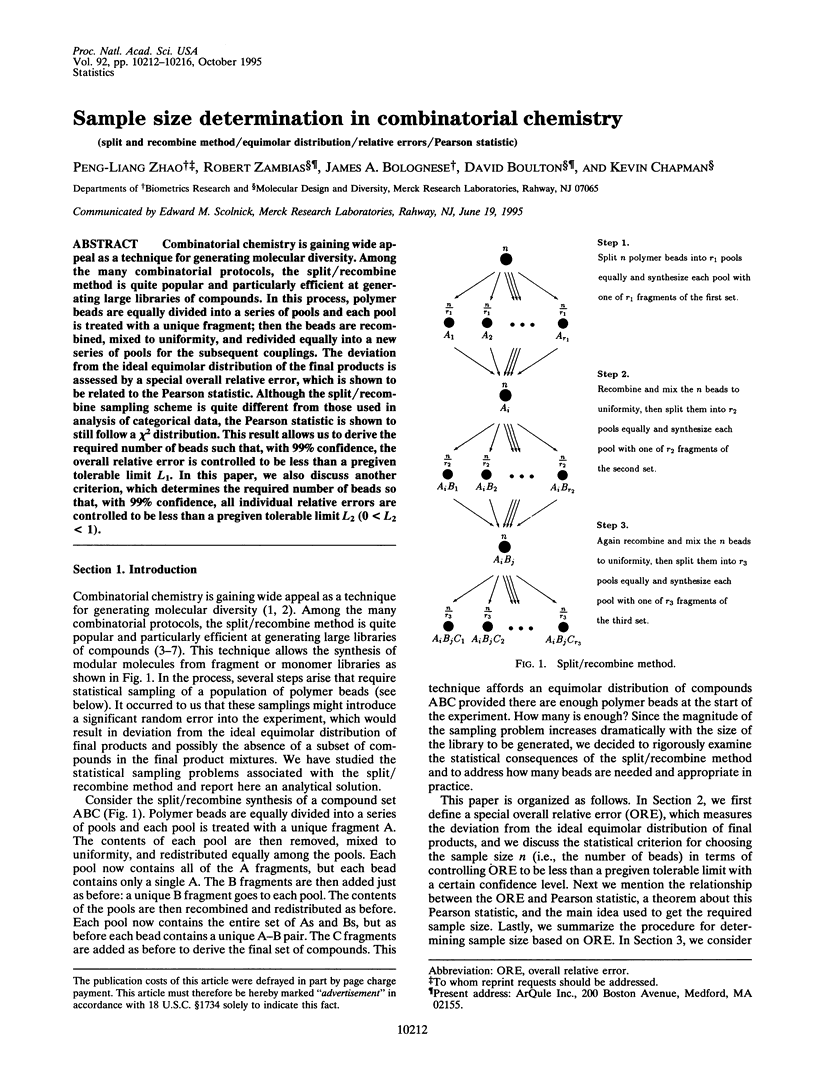
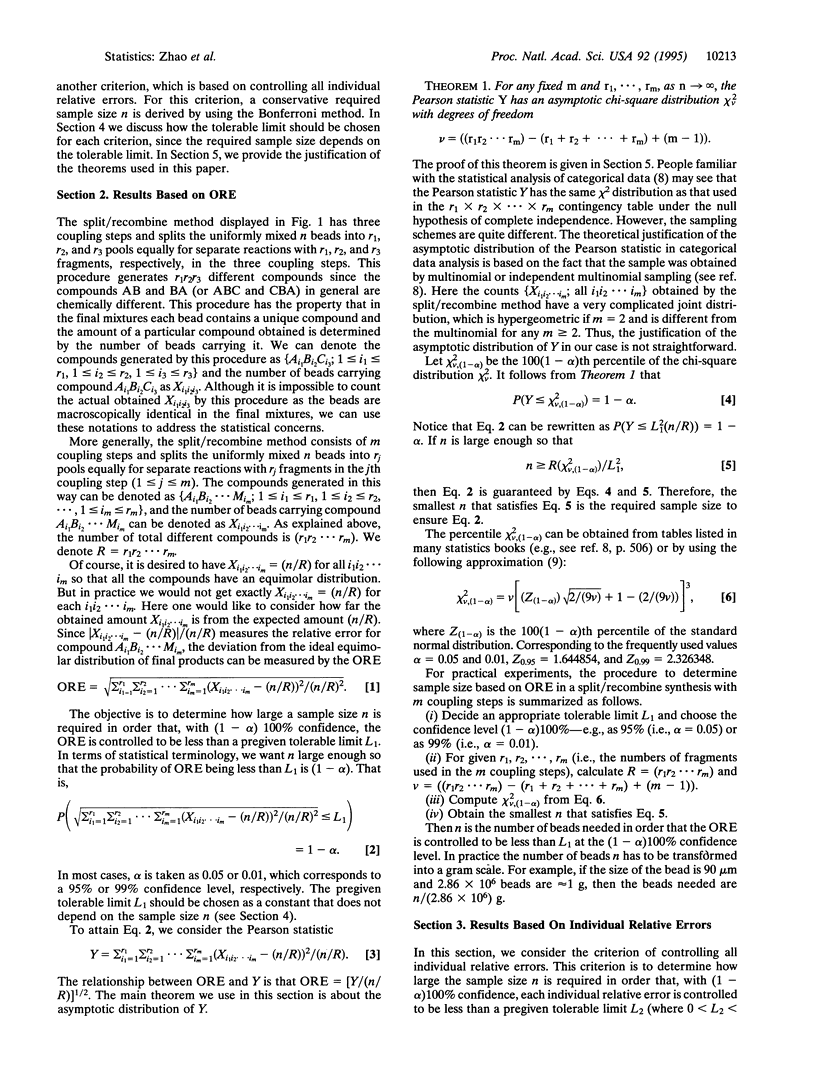
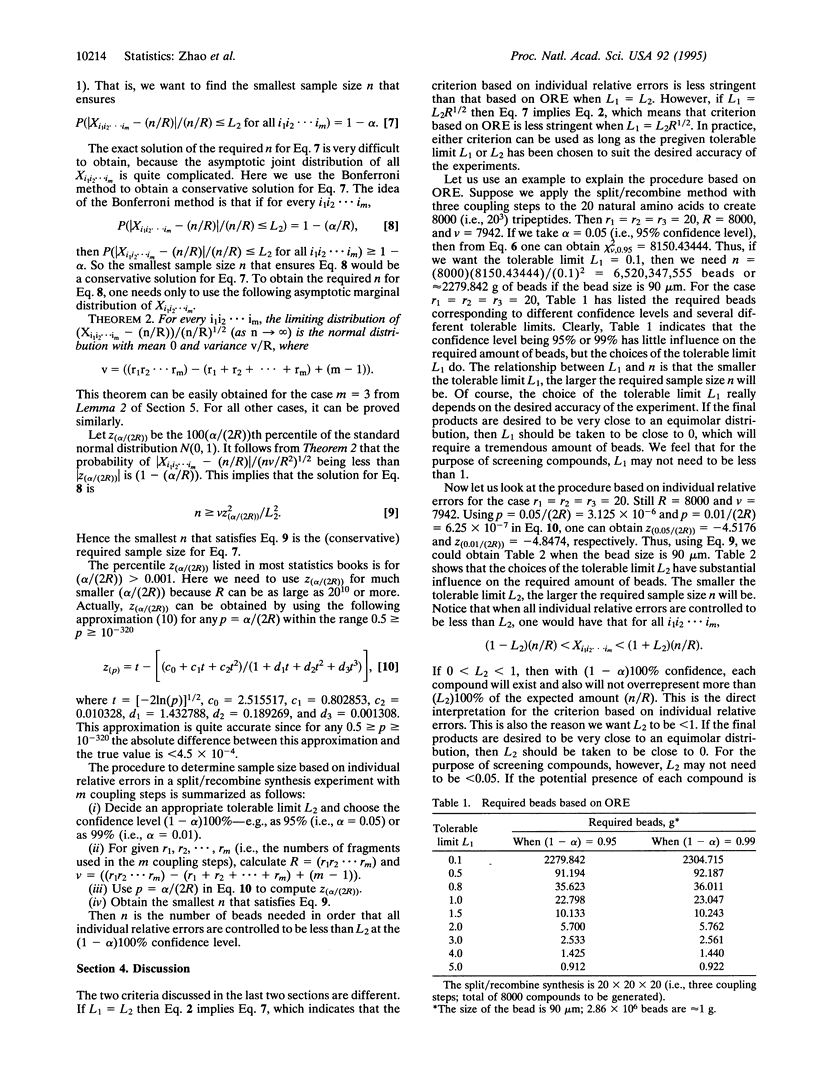
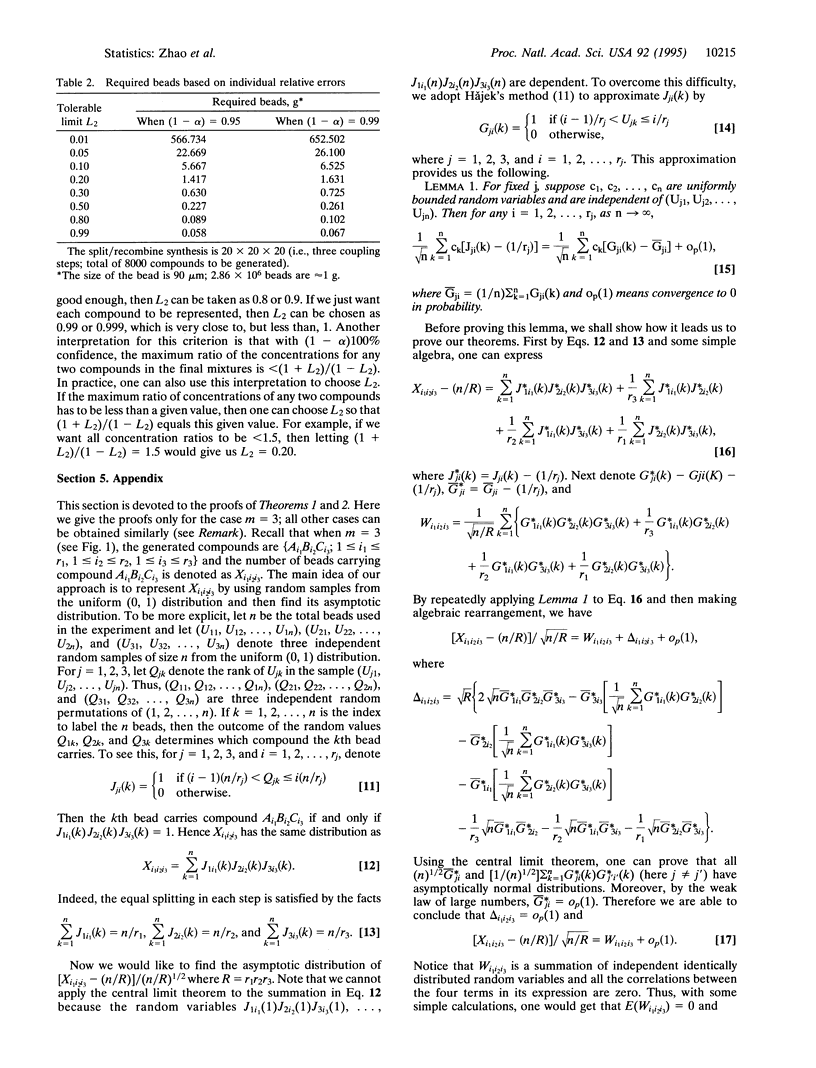
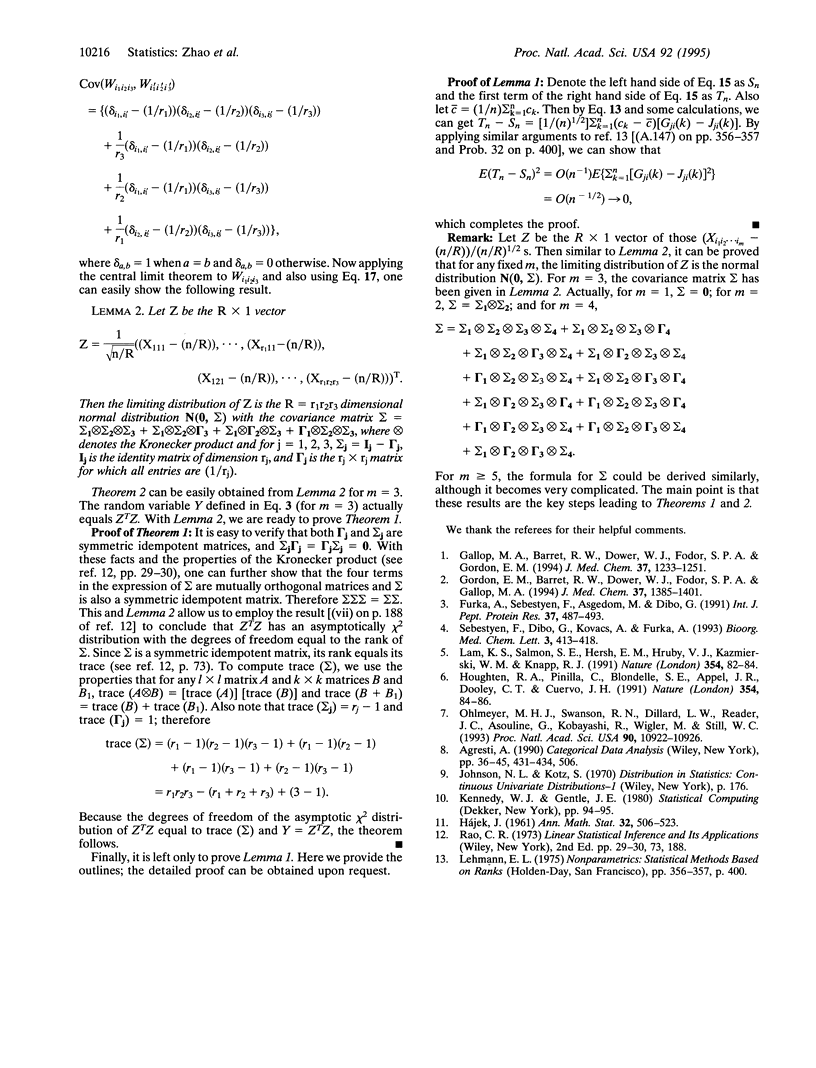
Selected References
These references are in PubMed. This may not be the complete list of references from this article.
- Furka A., Sebestyén F., Asgedom M., Dibó G. General method for rapid synthesis of multicomponent peptide mixtures. Int J Pept Protein Res. 1991 Jun;37(6):487–493. doi: 10.1111/j.1399-3011.1991.tb00765.x. [DOI] [PubMed] [Google Scholar]
- Gallop M. A., Barrett R. W., Dower W. J., Fodor S. P., Gordon E. M. Applications of combinatorial technologies to drug discovery. 1. Background and peptide combinatorial libraries. J Med Chem. 1994 Apr 29;37(9):1233–1251. doi: 10.1021/jm00035a001. [DOI] [PubMed] [Google Scholar]
- Gordon E. M., Barrett R. W., Dower W. J., Fodor S. P., Gallop M. A. Applications of combinatorial technologies to drug discovery. 2. Combinatorial organic synthesis, library screening strategies, and future directions. J Med Chem. 1994 May 13;37(10):1385–1401. doi: 10.1021/jm00036a001. [DOI] [PubMed] [Google Scholar]
- Houghten R. A., Pinilla C., Blondelle S. E., Appel J. R., Dooley C. T., Cuervo J. H. Generation and use of synthetic peptide combinatorial libraries for basic research and drug discovery. Nature. 1991 Nov 7;354(6348):84–86. doi: 10.1038/354084a0. [DOI] [PubMed] [Google Scholar]
- Lam K. S., Salmon S. E., Hersh E. M., Hruby V. J., Kazmierski W. M., Knapp R. J. A new type of synthetic peptide library for identifying ligand-binding activity. Nature. 1991 Nov 7;354(6348):82–84. doi: 10.1038/354082a0. [DOI] [PubMed] [Google Scholar]
- Ohlmeyer M. H., Swanson R. N., Dillard L. W., Reader J. C., Asouline G., Kobayashi R., Wigler M., Still W. C. Complex synthetic chemical libraries indexed with molecular tags. Proc Natl Acad Sci U S A. 1993 Dec 1;90(23):10922–10926. doi: 10.1073/pnas.90.23.10922. [DOI] [PMC free article] [PubMed] [Google Scholar]


